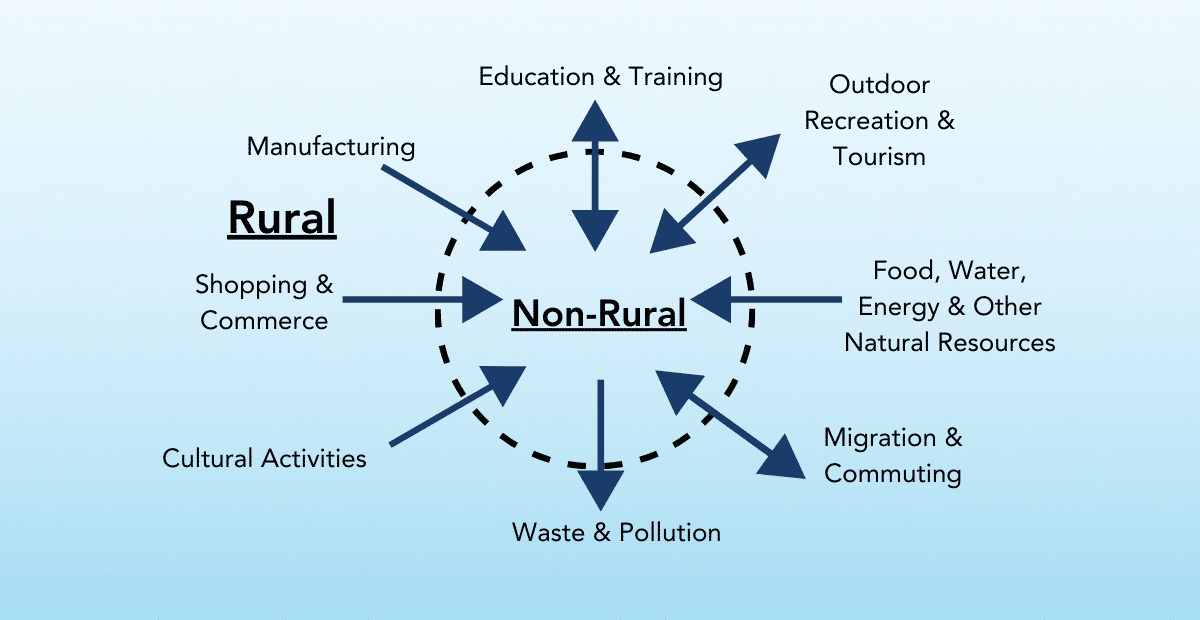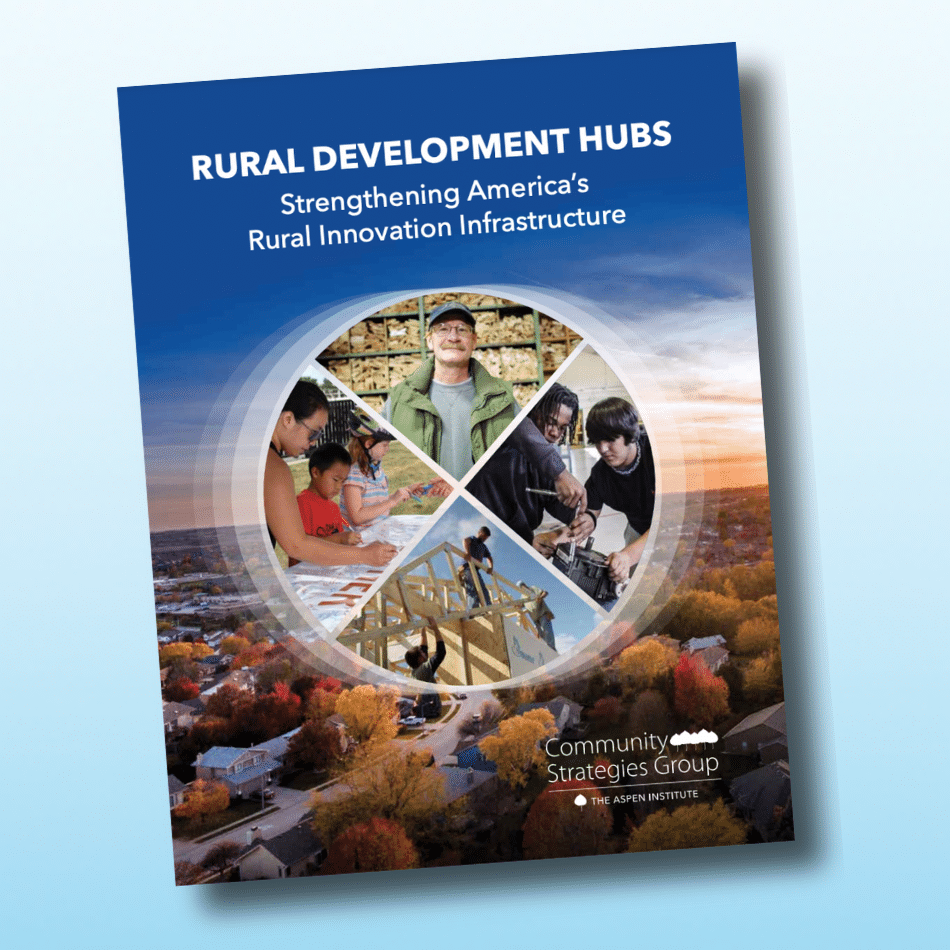At Aspen CSG, we believe thriving regions are built on urban and rural communities’ shared, interconnected, and interdependent success. Across the country, urban and rural areas are deeply linked through economic, cultural, and environmental ties. Yet, these connections often go unrecognized or undervalued in traditional development strategies.
Our work emphasizes the importance of regional collaboration to address systemic challenges and unlock opportunities that benefit all parts of a region (and all the people in the region) — because strong regions require strong urban and rural foundations.
Urban and suburban regions are the largest population centers and are major drivers of the knowledge and financial sectors of the economy. However, they produce very little of what they consume.
Rural regions contain roughly 20% of the population and steward 99% of the nation’s land and the vast majority of its water, food production, and natural resources. It is vital for the nation’s success and every person’s well-being that rural communities and regions are healthy and vibrant so this interconnected and interdependent relationship continues successfully.
Our research and partnerships highlight how rural communities contribute critical resources to regional economies, from agricultural production and related suppliers to renewable energy, small to mid-size manufacturing, small business development, and cultural richness. Meanwhile, urban areas offer vital markets, infrastructure, and institutions that sustain rural prosperity.
By acting together as a region, urban and rural communities can pool resources, share knowledge, and create strategies to address persistent inequities and build more resilient economies. Through our reports, case studies, and convenings, we provide actionable insights on fostering these partnerships and bridging the fallacy of an “urban-rural divide.”
The Rural Development Hubs model exemplifies this approach, showcasing how place-rooted organizations can connect rural communities across broader regions, leveraging regional assets to drive equitable development. Hubs like these serve as catalysts for collaboration, fostering solutions that improve regional outcomes. From increasing access to broadband and affordable housing to addressing workforce challenges, these hubs demonstrate that aligning urban and rural priorities creates lasting benefits for all. We also work with partners nationwide to explore practical ways for regions to act cohesively.
The “Act as a Region” building block of our Thrive Rural Framework provides tools and strategies for communities to break down silos, amplify collective impact, and create policies that strengthen urban and rural areas alike.
By prioritizing interdependence, we can reimagine regional development to ensure every rural or urban community has a seat at the table and an equitable share in the region’s success. Together, we’re building a future where regions thrive because all their parts thrive.







